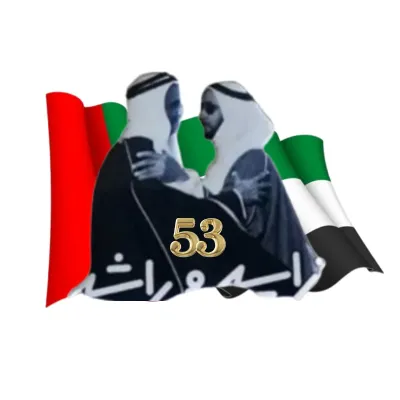Meaning of Colors Libyan Flag
What is the Meaning of the Colors Libyan Flag?
The flag of Libya, adopted after the country gained independence in 1951, is a simple yet powerful symbol reflecting the nation's history, culture, and aspirations. Consisting of three horizontal stripes—red, black, and green—from top to bottom, the flag holds deep significance for the Libyan people.
Understanding the Flag of Libya:
Before we delve into the meanings behind the colors of the Libyan flag, it's essential to understand the flag itself. The Libyan flag consists of three horizontal stripes of red, black, and green, with a white crescent and star centered on the black stripe. Adopted on November 11, 1977, this flag replaced the previous design that featured a combination of green and white, representing the Libyan Arab Republic.
Symbolism of the Colors of the Libyan Flag
Red:
The topmost stripe of the Libyan flag is red, a color that holds profound symbolism across various cultures and contexts. In the Libyan flag, red is often interpreted as representing the sacrifices made by the Libyan people in their struggles for independence and freedom. It symbolizes the bloodshed and courage of those who fought for Libya's sovereignty and self-determination. Additionally, red is associated with strength, valor, and resilience, qualities that have defined Libya's journey through its turbulent history.
Black
The central stripe of the Libyan flag is black, a color laden with both solemnity and hope. Historically, black has been associated with resistance, defiance, and mourning. In the context of Libya, the black stripe serves as a reminder of the oppression and hardships endured under colonial rule and authoritarian regimes. It symbolizes the darkness of oppression but also the resilience of the Libyan people in the face of adversity. Moreover, black represents the determination to overcome challenges and strive toward a brighter future.
Green
The bottommost stripe of the Libyan flag is green, a color deeply intertwined with Islam and nature. Green is often associated with growth, renewal, and prosperity. In the Libyan flag, green symbolizes Libya's agricultural wealth, as well as its commitment to Islam, which is the predominant religion in the country. It reflects the fertile lands of Libya and the hope for a prosperous and harmonious society. Green also signifies unity and solidarity among the diverse ethnic and cultural groups that comprise the Libyan nation.
White Crescent and Star
Centered on the black stripe of the Libyan flag is a white crescent and star, which are common symbols in Islamic iconography. The crescent and star represent faith, purity, and enlightenment. In the Libyan context, they symbolize the country's Islamic heritage and identity. The crescent moon, in particular, is associated with the lunar calendar used in Islam and serves as a reminder of the spiritual values that guide Libyan society. The star represents guidance and aspiration, leading the way towards a brighter future for Libya.
Significance
The significance of the Libyan flag lies in its symbolism, which represents the history, culture, and aspirations of the Libyan people. Each element of the flag holds deep meaning, reflecting the nation's past struggles and its vision for the future
.
Historical Context
To truly understand the symbolism of the Libyan flag, it's essential to examine the historical context in which it was adopted. The current flag replaced the previous design following the establishment of the Great Socialist People's Libyan Arab Jamahiriya under the leadership of Muammar Gaddafi. The new flag was introduced as part of Gaddafi's efforts to emphasize Libya's Arab identity and distance the country from its colonial past.
However, the symbolism of the flag transcends political ideologies and regimes. It reflects the aspirations of the Libyan people for freedom, dignity, and self-determination. Throughout Libya's history, the flag has served as a rallying point for resistance against foreign occupation, tyranny, and injustice. It embodies the collective memory and struggles of generations of Libyans who have fought for their rights and liberties.
Challenges and Renewal
In recent years, Libya has faced significant challenges, including political instability, conflict, and socioeconomic hardship. The flag, once a symbol of unity and hope, has at times been overshadowed by division and discord. Nevertheless, the colors of the Libyan flag continue to inspire resilience and determination among the Libyan people.
As Libya navigates its path towards peace, stability, and prosperity, the symbolism of the flag remains as relevant as ever. It serves as a reminder of the values and principles that unite Libyans across ethnic, religious, and regional divides. Moreover, it represents the shared vision of a Libya where all citizens can live with dignity, freedom, and equality
Conclusion
In conclusion, the colors of the Libyan flag hold deep significance, reflecting the history, struggles, and aspirations of the Libyan people. From the sacrifices of the past to the hopes for the future, each color symbolizes a distinct aspect of Libya's identity and journey. As Libya continues its quest for peace and progress, the flag serves as a timeless emblem of unity, resilience, and hope.
Spotlight on Trending Promo Gear
Browse the most popular and trending Corporate Gifts
Promotional Sports Water Bottles
Promotional Sports Water Bottles
Promotional Sports Water Bottles
Back To School Gifts
Promotional Sports Water Bottles
Promotional Sports Water Bottles
Promotional Sports Water Bottles
Eco Friendly Bottles




















